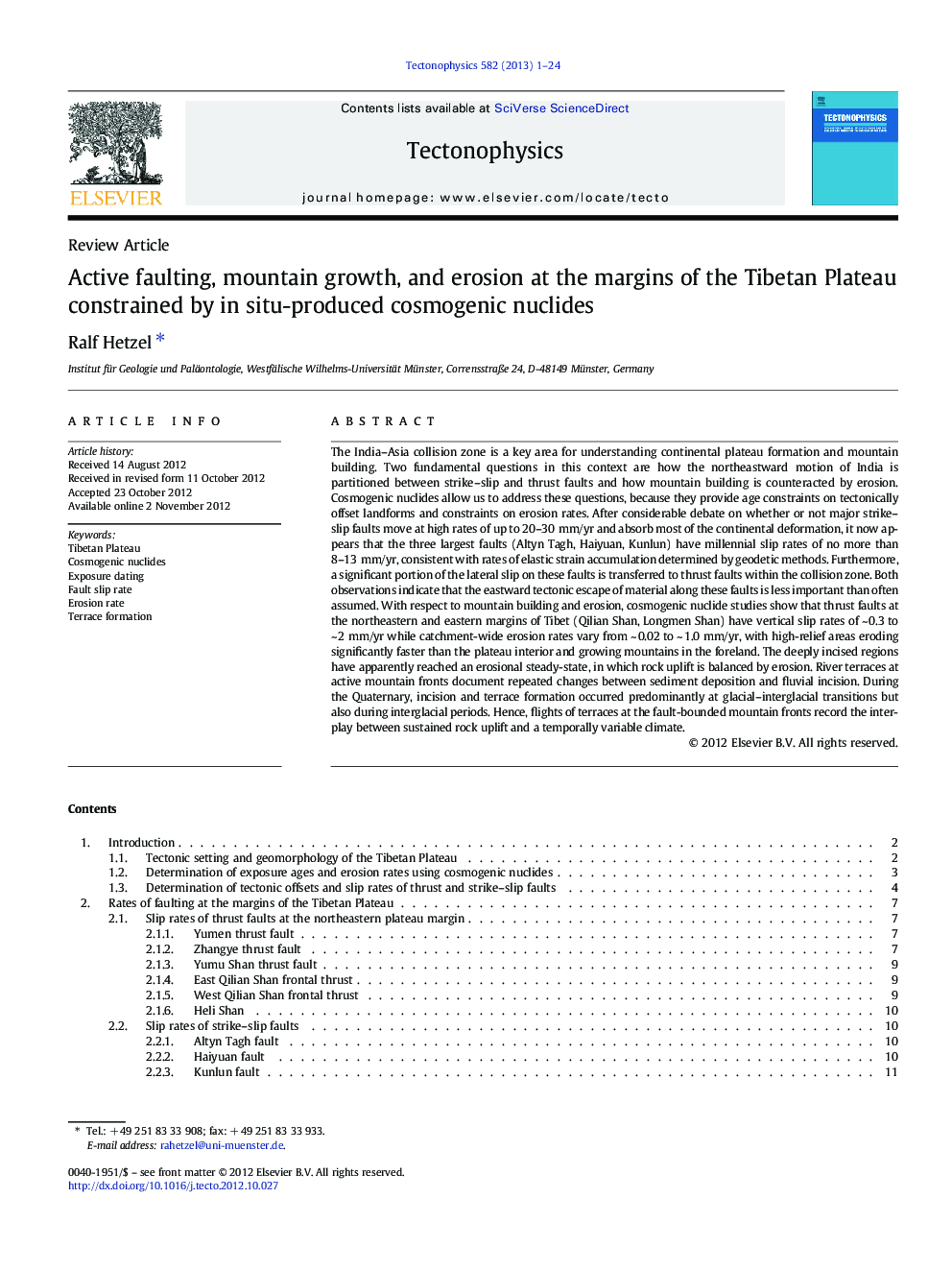| کد مقاله | کد نشریه | سال انتشار | مقاله انگلیسی | نسخه تمام متن |
|---|---|---|---|---|
| 4692521 | 1636803 | 2013 | 24 صفحه PDF | دانلود رایگان |
The India–Asia collision zone is a key area for understanding continental plateau formation and mountain building. Two fundamental questions in this context are how the northeastward motion of India is partitioned between strike–slip and thrust faults and how mountain building is counteracted by erosion. Cosmogenic nuclides allow us to address these questions, because they provide age constraints on tectonically offset landforms and constraints on erosion rates. After considerable debate on whether or not major strike–slip faults move at high rates of up to 20–30 mm/yr and absorb most of the continental deformation, it now appears that the three largest faults (Altyn Tagh, Haiyuan, Kunlun) have millennial slip rates of no more than 8–13 mm/yr, consistent with rates of elastic strain accumulation determined by geodetic methods. Furthermore, a significant portion of the lateral slip on these faults is transferred to thrust faults within the collision zone. Both observations indicate that the eastward tectonic escape of material along these faults is less important than often assumed. With respect to mountain building and erosion, cosmogenic nuclide studies show that thrust faults at the northeastern and eastern margins of Tibet (Qilian Shan, Longmen Shan) have vertical slip rates of ~ 0.3 to ~ 2 mm/yr while catchment-wide erosion rates vary from ~ 0.02 to ~ 1.0 mm/yr, with high-relief areas eroding significantly faster than the plateau interior and growing mountains in the foreland. The deeply incised regions have apparently reached an erosional steady-state, in which rock uplift is balanced by erosion. River terraces at active mountain fronts document repeated changes between sediment deposition and fluvial incision. During the Quaternary, incision and terrace formation occurred predominantly at glacial–interglacial transitions but also during interglacial periods. Hence, flights of terraces at the fault-bounded mountain fronts record the interplay between sustained rock uplift and a temporally variable climate.
Journal: Tectonophysics - Volume 582, 2 January 2013, Pages 1–24
